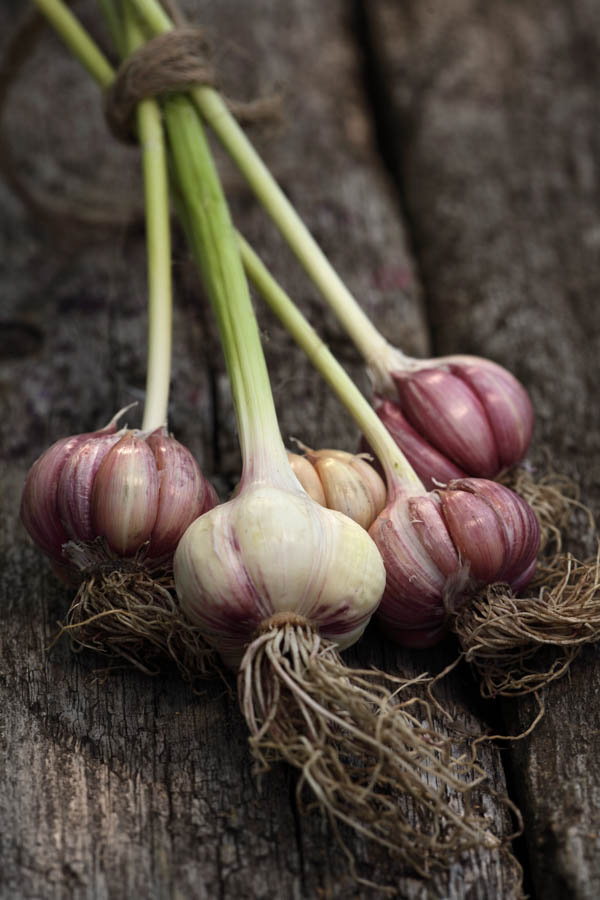Growing Garlic in Containers: Essential Requirements

As an upright plant with shallow roots and relatively small size, you would think that garlic would be a good choice for growing in containers. And you would be partly correct.
The problem? Some of garlic’s other requirements make growing in containers a bit of a challenge. Garlic plants have a long time to maturity, anywhere from 5 to 8 months. So if you are a gardener who likes to modify your container plants from season to season or even month to month, you will have to work your periodic changes around the cultural needs of the garlic and without disturbing its bulb or roots. Garlic’s shallow root system does not allow it to reach too far into the soil to access nutrients. Available nutrients need to be within the small range of garlic’s root system. Moreover, garlic has moderately high fertility needs, which can be difficult to provide and maintain in a container. Nutrients in containers can easily leach out. Successful gardeners will need to supply supplemental fertility to their garlic plants several times throughout the growing season.
Undeterred? Garlic can be grown in containers successful using the following tips:
Container size. Choose a container that is at least 18 inches deep and 12 inches wide. Half barrels and wooden crates work well provided that they have drainage holes in the bottom.
Location. Place the container in a location that receives at least 6 hours of bright, direct sunlight each day.
Soil. GardenZeus recommends a soil mix of at least 50% sand when growing garlic in containers, with moderate amounts of organic matter or compost. Potting soils with high proportions of organic matter tend to shrink and collapse over the course of a growing season as soil microbes and macro organisms decompose the organic matter. Do not use regular garden soil in containers for growing garlic: garden soil will become far too soggy during the rainy season. Use GardenZeus’s recommended soil mix tol promote good soil drainage. Soil that drains poorly can promote fungal root diseases to which garlic is subject.
Fertility requirements. Botanically, garlic bulbs are not roots but modified leaves and as such, they require significant nitrogen. GardenZeus recommends adding nitrogen in the form of diluted urea or a cup of chicken manure diluted in 4 gallons of water (half cup if fresh manure) and mixed thoroughly after garlic shoots are 2 to 3 inches tall and about once per month thereafter. GardenZeus recommends against adding nitrogen or other nutrients toward the end of the growing season: adding nutrients at the end of the growing season makes bulbs more prone to rotting during storage.
Don’t know your GardenZeus climate zone? Click here.
Other articles of interest: